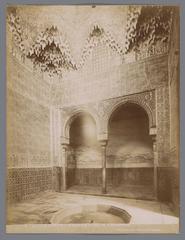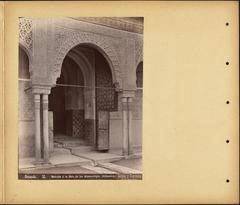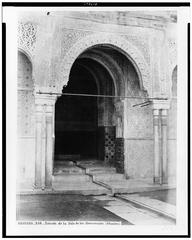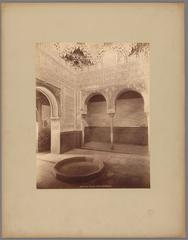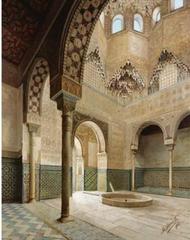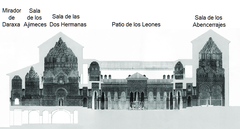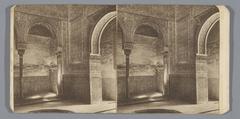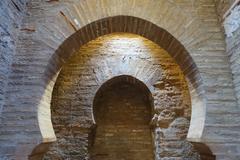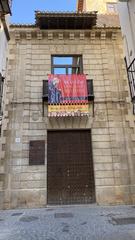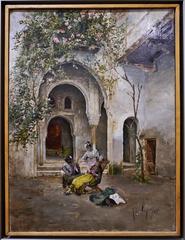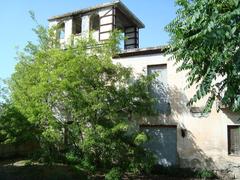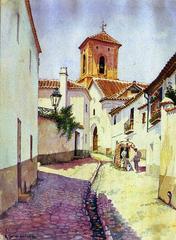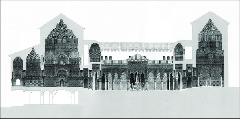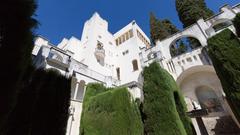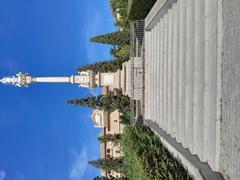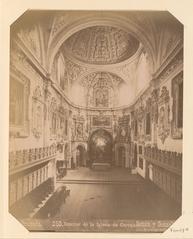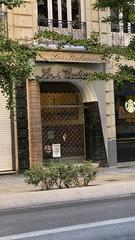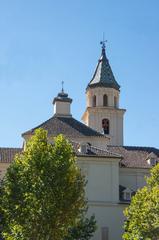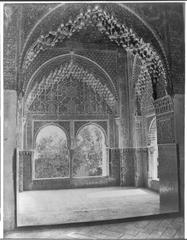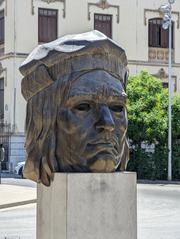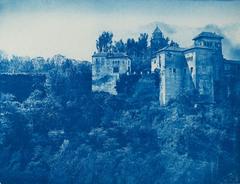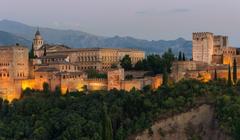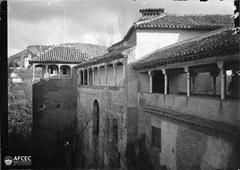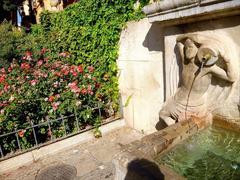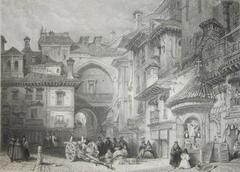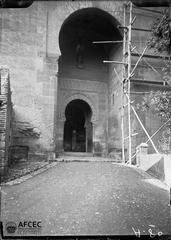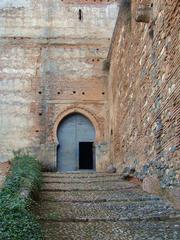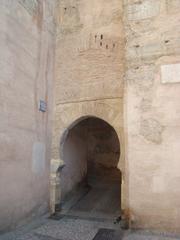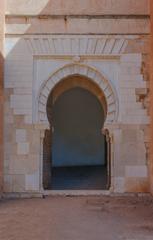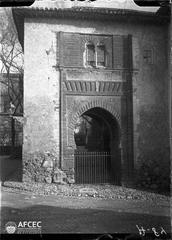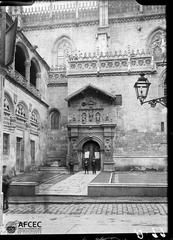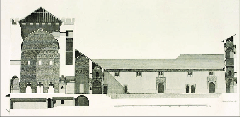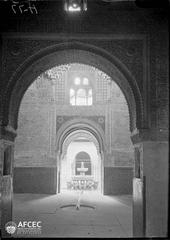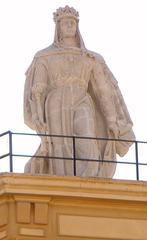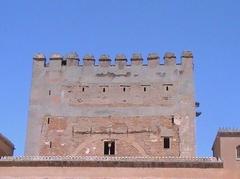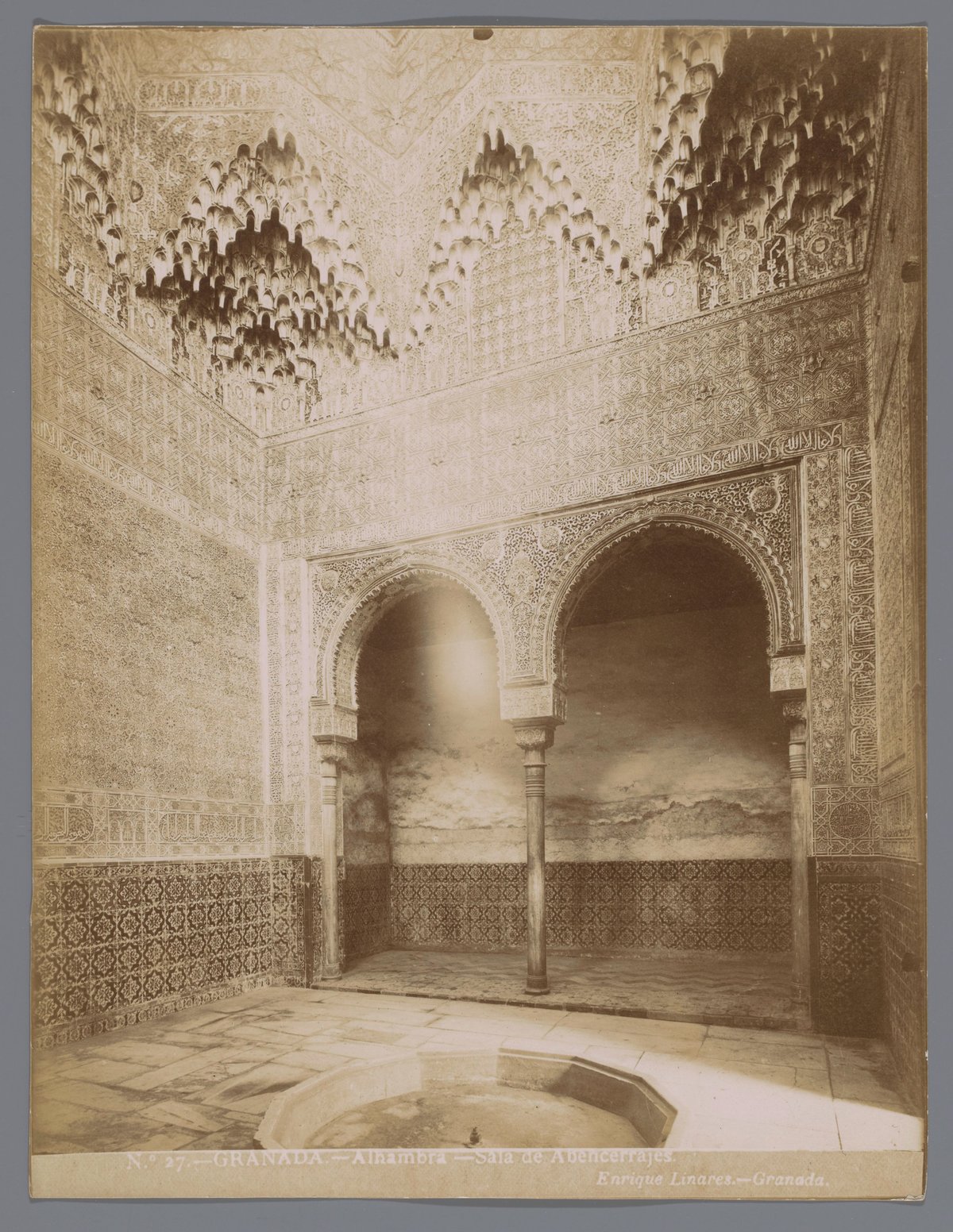
Sala de los Abencerrajes: Visiting Hours, Tickets, and Comprehensive Guide to Granada’s Historic Alhambra
Date: 14/06/2025
Introduction
The Sala de los Abencerrajes, nestled within the heart of Granada’s Alhambra, stands as a remarkable testament to the artistic, cultural, and historical richness of medieval Andalusia. Renowned for its exquisite muqarnas dome, intricate stucco, and evocative tilework, this chamber is steeped in legend and is a magnet for visitors seeking to immerse themselves in the Alhambra’s layered past. The room not only showcases the craftsmanship of the Nasrid dynasty but also echoes the poignant legend of the noble Abencerrajes family—a tale that has inspired literature and art for centuries.
This guide offers a detailed overview of the Sala de los Abencerrajes: its history, architectural highlights, practical visiting information, and its enduring cultural resonance. For up-to-date hours and ticketing, always consult the official Alhambra website, and consider using the Audiala app for real-time updates and guided experiences. Let’s explore why the Sala de los Abencerrajes remains an essential highlight for travelers in Granada (Granada Hoy; Alhambra Info; Visitas Guiadas Alhambra).
Table of Contents
- Introduction
- Historical Background of the Abencerrajes
- The Legend and Its Cultural Impact
- Architectural Features and Symbolism
- Visiting the Sala de los Abencerrajes
- Nearby Attractions and Recommended Itinerary
- Preservation and Restoration Efforts
- Frequently Asked Questions (FAQ)
- Conclusion
Historical Background of the Abencerrajes
The Abencerrajes were an illustrious noble family of North African origin, known as the Banu Sarraŷ, who rose to prominence during the Nasrid dynasty’s rule over the Emirate of Granada in the 13th to 15th centuries (Granada Hoy). Their influence is reflected by their residence within the Alhambra, signifying their importance in the royal court. The site of their palace is one of the oldest on the Sabika hill, with archaeological excavations revealing layers of history that predate much of the current Alhambra complex.
After the Christian conquest in 1492, the area was repurposed and subdivided among new owners, further enriching its historical narrative.
The Legend of the Abencerrajes and Its Cultural Impact
The Sala de los Abencerrajes is inseparable from the enduring legend that surrounds it. According to tradition, Sultan Abu al-Hasan Ali (Muley Hacén), suspecting treachery among the Abencerrajes, ordered the massacre of thirty-six knights within this very hall. Their blood is said to have stained the central marble fountain—a detail that continues to captivate visitors (Granada Hoy; Alhambra Info).
Though historians debate the event’s authenticity, the legend has inspired works by Lope de Vega, Cervantes, and Washington Irving. The story symbolizes the tragic end of the Nasrid dynasty and has become entwined with Granada’s identity, echoing in poetry, opera, and local traditions (Wikipedia; Nomads Travel Guide).
Architectural Features and Symbolism
Layout and Spatial Context
Situated within the Nasrid Palaces, north of the Court of the Lions and opposite the Sala de Dos Hermanas, the Sala de los Abencerrajes is reached through delicately decorated arches (alhambra.info). Its square plan is flanked by four alcoves, each accessible through horseshoe arches supported by slender, ornate columns.
The upper level, once part of the harem, features a mirador (viewpoint) with arches overlooking the Court of the Lions, originally shielded by latticework for privacy (alhambra.info).
Decorative Elements
- Stucco and Geometric Ornamentation: The walls display intricate geometric patterns, arabesques, and calligraphy, exemplifying Nasrid aniconic artistry.
- Tilework (Azulejos): The lower walls are adorned with 16th-century Sevillian ceramic tiles, adding Renaissance color and contrast to the Islamic designs above.
- Painted Details: Capitals are painted blue—symbolic in Islamic art—and alcove ceilings preserve traces of original painted motifs.
The Muqarnas Dome and Water Features
The breathtaking muqarnas (stalactite) dome, supported by eight pendentives, creates a mesmerizing play of light and shadow. Sunlight streams through small dome windows, animating the honeycomb plasterwork. The central marble fountain, rumored to be bloodstained, is both an architectural and legendary focal point (yatrikaone.com).
The fountain is connected by a water channel to the iconic Fountain of the Lions, integrating the room into the palace’s advanced hydraulic system.
Inscriptions and Symbolism
Arabic inscriptions, including the Nasrid motto “There is no victor but God,” reinforce the spiritual and political authority of the dynasty. The decorative program—geometric complexity, interplay of water and light—evokes the Islamic vision of paradise.
Visiting the Sala de los Abencerrajes
Visiting Hours and Tickets
- Opening Hours: The Nasrid Palaces, including the Sala de los Abencerrajes, are open daily, typically from 8:30 AM to 6:00 PM (November–March) and 8:30 AM to 8:00 PM (April–October). Always check the official Alhambra website for seasonal updates.
- Ticketing: Entry to the Sala de los Abencerrajes is included with Alhambra general admission. Due to strict visitor limits, tickets often sell out weeks in advance—book early online.
Accessibility and Visitor Tips
- The Alhambra offers some accessible routes, but the Sala de los Abencerrajes has narrow doorways and uneven floors that may pose challenges for visitors with mobility issues.
- Non-flash photography is permitted; tripods and selfie sticks are not.
- Wear comfortable footwear and bring water, especially in summer.
- Arrive 30–45 minutes before your Nasrid Palaces entry slot to allow for security checks.
Guided Tours and Special Events
Official guided tours are available in multiple languages, providing context and storytelling that enrich the visit. Night tours offer a unique, illuminated perspective on the palaces.
Nearby Attractions and Recommended Itinerary
- Within the Alhambra: Explore the Court of the Lions, Generalife Gardens, and Alcazaba fortress.
- In Granada: Visit the cathedral, Albayzín neighborhood, and Sacromonte caves for a complete historical experience.
A typical itinerary might start with the Alcazaba, continue to the Nasrid Palaces (including the Sala de los Abencerrajes), and finish with the Generalife gardens (andalucia.com).
Preservation and Restoration Efforts
Ongoing conservation focuses on protecting delicate stucco, tilework, and the muqarnas dome from humidity and wear. Restoration experts use cutting-edge techniques to ensure the hall’s longevity for future generations (alhambra.info).
Frequently Asked Questions (FAQ)
What are the visiting hours for the Sala de los Abencerrajes?
The Nasrid Palaces are generally open from 8:30 AM–6:00 PM (winter) and 8:30 AM–8:00 PM (summer). Confirm current hours on the official website.
How do I buy tickets?
Tickets must be reserved in advance online through the official Alhambra website or authorized vendors.
Is the Sala de los Abencerrajes accessible for visitors with reduced mobility?
Some accessible paths exist, but the historic structure limits full accessibility. Review the official accessibility info before visiting.
Can I take photos?
Yes, non-flash photography is allowed. Tripods and selfie sticks are not permitted.
Are guided tours available?
Yes, official tours and audio guides offer rich historical and cultural context.
Conclusion
The Sala de los Abencerrajes is a stunning embodiment of Nasrid artistry, historical intrigue, and enduring legend. Careful planning—especially regarding tickets and timing—ensures an enriching experience. Beyond its architectural marvels, the hall’s legend continues to captivate, adding an emotional and symbolic dimension to your visit. For the fullest appreciation, consider guided tours and explore the broader Alhambra complex and Granada’s historic center. Preservation efforts protect this unique heritage for generations to come.
For official updates, ticketing, and visitor resources, consult the Alhambra’s website. Download the Audiala app for personalized tours and real-time information, and enhance your Granada journey with deeper cultural insights.
References
- Granada Hoy
- Alhambra.info
- Nomads Travel Guide
- Visitas Guiadas Alhambra
- Wikipedia
- andalucia.com
- yatrikaone.com
- Alhambra website
